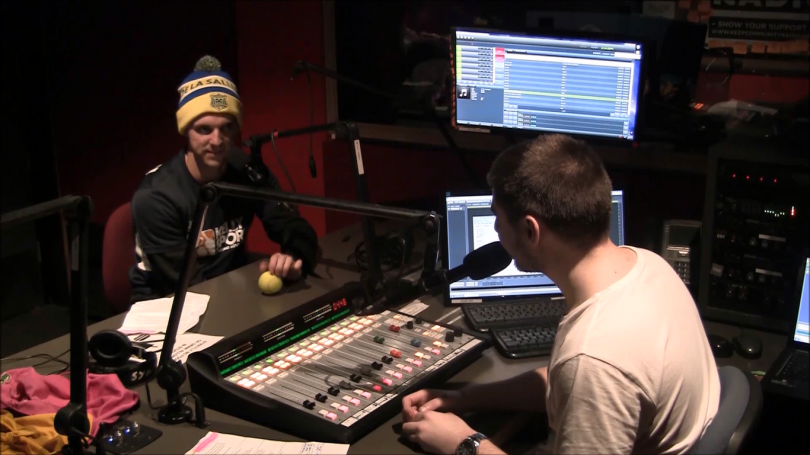Ballkids ready for Australian Open
This show and video belongs to SYN Media.The ballkids of next year’s Australian Open have already begun training. Joshua Galbraith, a Supervisor of the Austr…
YouTube (2005) is just over a decade old and yet the medium is constantly evolving – this influenced the production of my Australian Open news story both in its duration and presentation. According to the YouTube statistics page, the platform has experienced rapid growth in its average watch time: on mobile devices, the average viewing session is now more than forty minutes (2016). YouTube’s rising popularity is a direct contrast to the decline of commercial news industries such as Fairfax Media (1841). Antony Funnell from the Australian Broadcasting Corporation (ABC) (1932) contends the public are going to miss quality civic journalism (The Post Journalistic World 2016). Funnell’s argument is flawed: the key is to adapt with the changes – journalists need to be versatile.
My news story exceeded seven minutes in length which was a deliberate decision; although it is not unusual for sports news stories on YouTube to now go over half an hour. As stated on the MMA Fighting (2005) webpage, Ariel Helwani, a mixed martial arts journalist is the reigning five-time world MMA Award Journalist of the Year winner (2016). Helwani hosts a YouTube show labelled the MMA Hour, which presents updates through a discussion with athletes and coaches (MMA Fighting on SBN 2016). Helwani succeeds as he is a sports historian and has strong presentation skills. Similarly, prior to my interview with the Australian Open Ballkids Supervisor, Joshua Galbraith, I researched our subject matter which was not just on next year’s Australian Open but the experience of being a ballkid in general. The subject matter of ballkids alone was newsworthy – most tennis journalists write or broadcast about tennis players. Clare Rawlinson (2016) from the ABC states approximately 380 kids out of more than 2500 are chosen to be a part of the Australian Open Ballkids squad. As highlighted in my interview with Galbraith, training had already begun months before our recent discussion was held.
When it comes to sports journalists there is one simple criterion I search for and that is to not interrupt the interviewee. The amount of minutes people watch on YouTube has increased by at least fifty per cent per year, making it even more obvious as to which journalists interrupt their interviewees (2016). The ability to not interject (within reason) is such a simple yet effective broadcast skill to practice, it shows respect to your interviewee and allows the audience time to comprehend the material. The Media, Entertainment and Arts Alliance (MEAA) code of ethics provides a guideline of not allowing personal interest to undermine fairness (2016). I was respectful towards Galbriath, allowing him to finish his points without feeling rushed.
Bibliography
Media, Entertainment and Arts Alliance 2016, MEAA Journalist Code of Ethics, Media, Entertainment and Arts Alliance, viewed 6 August 2016, <https://www.meaa.org/meaa-media/code-of-ethics/>.
MMA Fighting on SBN 2016, MMAFightingonSBN, viewed 6 August 2016, SB Nation, <https://www.youtube.com/user/MMAFightingonSBN>.
MMA Fighting 2016, Ariel Helwani, SB Nation, viewed 6 August 2016, <http://www.mmafighting.com/authors/ariel-helwani>.
The Post Journalistic World 2016, radio, Australian Broadcasting Corporation, Australia, ABC Radio National, July 31 2016.
Rawlinson, C 2016, ‘Australian Open ball kids aim for the perfect roll ahead of first Grand Slam of 2016,’ Australian Broadcasting Corporation, 8 January, viewed 6 August 2016, <http://www.abc.net.au/news/2016-01-07/australian-open-ball-kids-aim-for-the-perfect-roll/7073620>.
YouTube 2016, Statistics, viewed 2 August 2016, <https://www.youtube.com/yt/press/statistics.html>.





